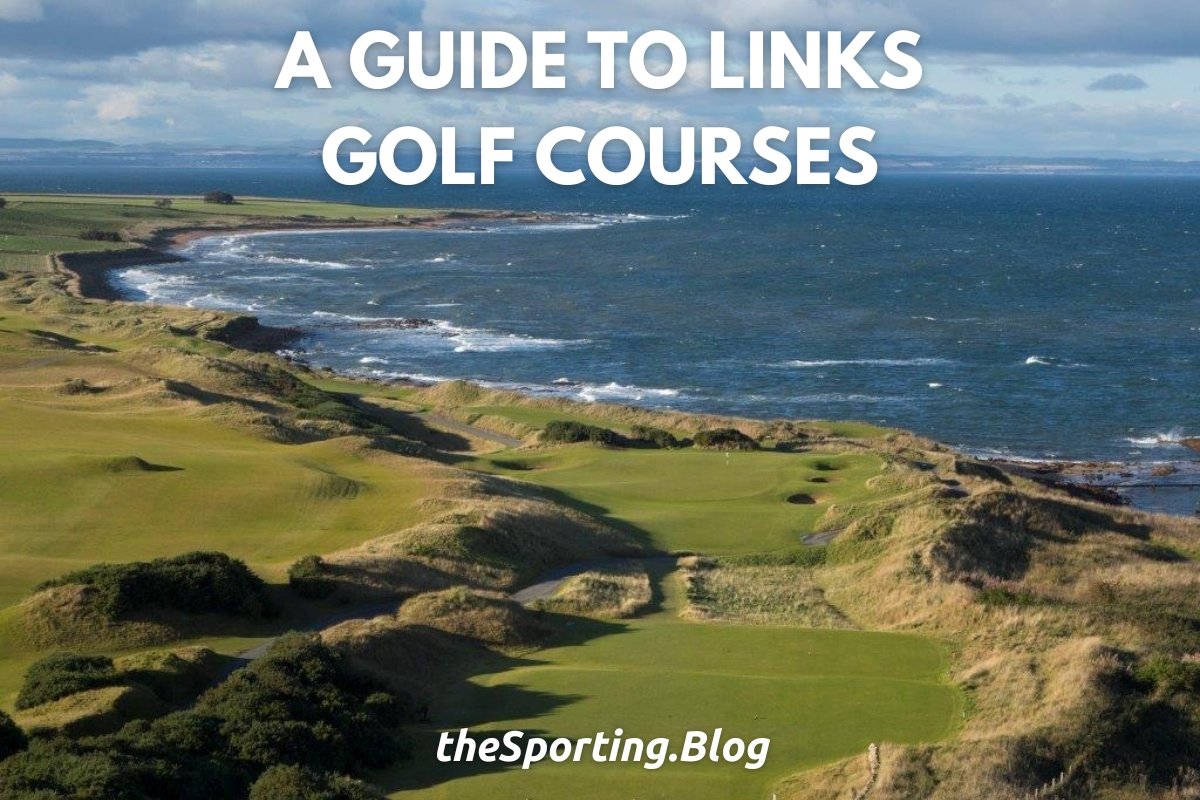A Guide to Links Golf Courses: Where the Game of Golf was Born
What is a Golf Links? Your Guide to Links Golf Courses
Links golf courses are where the game of golf was born.
In fact, the most famous course in the world, St. Andrews- dubbed the “home of golf”- is a links golf course.
As opposed to the “links-style” courses that have become more and more popular in the United States, true links courses predominantly reside in Ireland and Scotland. By most historians' count, there are less than 250 true links courses in the world.
Links golf is famous for its sloped terrain, brutal wind, and picturesque views with crashing waves in the background. Craftiness with the club becomes a premium and it’s not as easy to overpower the golf course with these factors.
What makes a links-style golf course you ask? Below are some of the critical characteristics that make up a true links course.
Sandy Soil
First and foremost, a true links course is plopped directly on top of sandy soil. There are a number of reasons why this soil is a great foundation for golf courses. First, it drains really well. If you venture overseas to experience links golf first-hand, make sure to pack your raincoat, and luckily due to the natural irrigation system, the courses are able to take on more water than most courses and remain firm.
Due to the fact that they drain well, the land was no good to farmers. They were then repurposed into some of the most beautiful golf courses that still remain today.
Links training in Wales!
Hugged by a coastline
True links golf is played on coastlines. Coastlines are where course designers found the most conducive land to construct a course on based on the reasons listed above. This is also a big reason why wind has such an impact on the links golf experience.
Links courses are usually found on small strips of land, which is where the terms “out” and “in” are derived from, two terms that are found on every scorecard across the world. Not very often will you pass by the clubhouse like you will in the states at the midpoint of your round. Instead, you would find yourself going “out” for the first 9 holes, before turning around to come “in” for the final 9.
This is made famous by St Andrews Old Course since you have a world-class view of the Scottish town that grows larger and larger as you approach the 18th and famous Swilcan Bridge.
You may find yourself taking more pictures than golf swings.
Bunkers, bunkers and more bunkers
A by-product of the course's location is that there is no shortage of bunkers. Pot bunkers, green side bunkers, fairway bunkers, you name it you’ll find it on a links course. I mean, this should be no surprise since the most appealing part of links courses are that they’re built on top of sandy soil.
On the ground vs in the air
Golf is played differently on a links course compared to any other type of golf. Wind plays a large role in links golf, and a popular way to diminish its impact is to keep your ball low. You’ll find plenty of opportunities for you to “run your ball” up the fairway and onto the green rather than watch your ball fall out of the sky like you may be accustomed to.
The wind also means players need to be careful when putting, as wind affects the roll of the ball on the green just as much as it does when its in the air!
The natural undulations of links courses allows players to get creative with their shots, using the slopes to their advantage and adding a whole new element to the game. When you’re dealing with 30-40 MPH winds, you don’t have much of a choice but to keep your ball flight low, thus playing on the ground vs in the air.
As mentioned above, links-style courses have become a popular alternative to the more common parkland courses you will find in the United States. Course architects have taken every aspect besides the shoreline to bring links golf inland.
They’ve found vast farmlands and converted them into golf courses that play similarly to what you will find at the home of golf with fewer trees and more bunkers.
Some 90% of the links courses across the world are concentrated in either Ireland, Scotland, or England. Below is just one example of a course you’ll find in each country.
Famous Links Golf Courses
Championship Course at Carnoustie (Scotland)
Eight-time host of the PGA Tour’s Open Championship, with the most recent being in 2018. The course itself is nicknamed by many of those that have played as “Car-nasty”. One spin around the course on a windy rainy day and it’ll make perfect sense.
Along with the Championship course which was declared the World’s Best Golf Course in 2019 by the World Golf awards, you’ll find 3 additional links courses that make up Carnoustie Golf Links (Burnside Course, Buddon Links & The Nestie).
Royal County Down (Northern Ireland)
Opening in 1889, this is one of the oldest golf courses in Ireland. Royal County Down plays host to some of the more picturesque views you can find. Despite being a true links course, it’s accompanied by ranging mountain peaks that add a visual element that will leave you second-guessing what part of the world you’re in.
Probably the most famous course yet to host an Open Championship, it’s no stranger to championship golf having hosted the Irish Open multiple times, as well as a Walker Cup in 2007.
Royal St George’s (England)
A staple on the PGA Tour’s Open Championship rotation, Royal St George has watched golfers hoist the Claret Jug 15 times. They cling to the fact they are the only English course on the tour’s rotation. Royal St George is known for its deep rough and even deeper bunkers. The course often gets pushback for being too challenging. Players are quick to cite the course’s unfairness due to the punishment received despite hitting quality shots. Isn’t that the fun of links golf? I guess it depends on who you ask.
If you are looking to play a true links golf course without crossing the pond, you will be limited to 3 locations; Oregon (Bandon Dunes), Cape Cod (Highland Links), or Nova Scotia (Cabot Links). Bandon and Cabot have become popular golf vacation destinations for those that want to experience authentic links golf.
However, links-style courses are abundantly more available, and some of the most recognisable courses include Oakmont Country Club, Erin Hills, Chambers Bay & Kiawah Island’s Ocean Course. These aren’t true links golf courses, but after a round or two on them, you’ll get the idea. I
f you don’t have the luxury of nabbing a tee time at one of these exclusive courses, a quick Google search should reveal a few in your area. You may be surprised to hear that some of the courses you have already played may be links-style, without you even realising it.
If you have yet to experience links golf in your lifetime, add it to the bucket list. No better place to do so than a trip overseas to where the game we all love was born.










